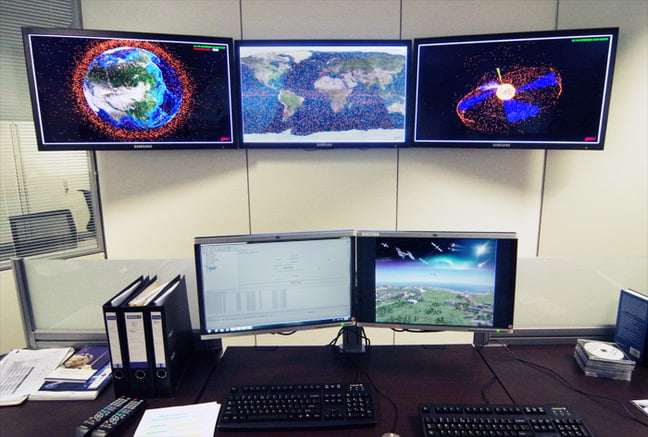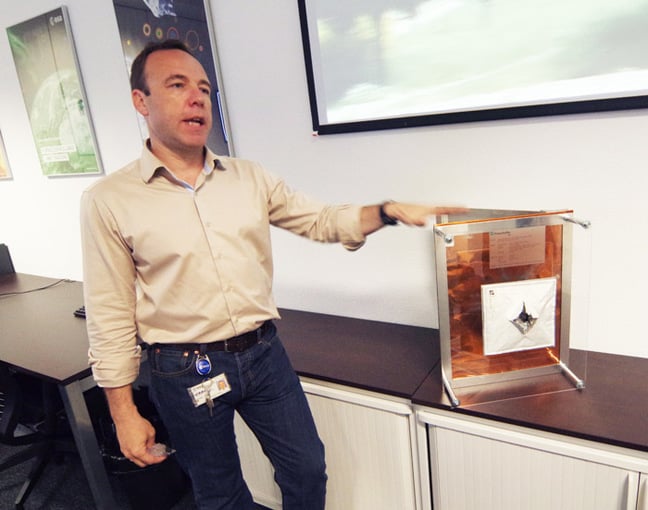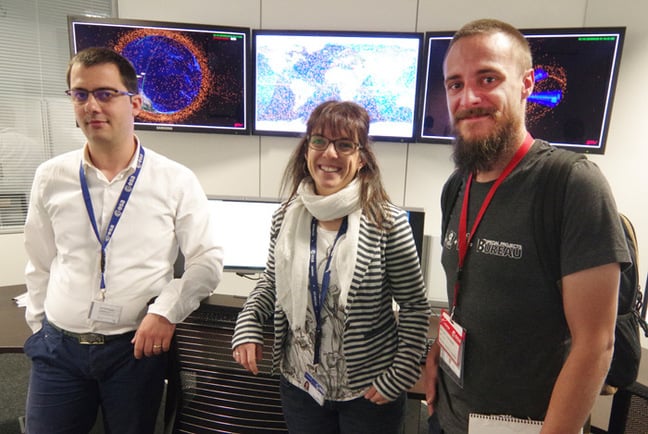This article is more than 1 year old
El Reg touches down at the ESA's Spanish outpost, sniffs around
Lab coats on, pipes at the ready for European Space Astronomy Centre tour
The ultimate aim of the SSA programme is to "enable Europe to autonomously detect, predict and assess the risk to life and property due to remnant man-made space objects, re-entries, in-orbit explosions and release events, in-orbit collisions, disruption of missions and satellite-based service capabilities, potential impacts of Near Earth Objects, and the effects of space weather phenomena on space- and ground-based infrastructure".
Disappointingly, while ESAC's SSA office does have a bank of monitors showing just how much crap is floating around up there, there is no red telephone connected directly to Bruce Willis's mobile in case his services are urgently required.

Emmet Fletcher showed us just what happens when a 6mm diameter ball of aluminium travelling at 7km/sec hits the skin of ESA's Automated Transfer Vehicle (ATV), which comprises an outer layer of insulation, aluminium backing plate and electrostatic shield, a sheet of Kevlar:

Fletcher noted: "If space debris hits something, a piece the size of a Euro coin can destroy a satellite."
He continued: "We know there are 20,000 space debris objects which are over 10cm, which is the smallest size we can track, and there are 600,00 objects which are smaller than 10cm and there are 35 million objects this size (6mm), and we don't know where they are."
The presence of these sub-10cm miniature menaces is confirmed by radar, but continually tracking them requires the development of new technologies. ESA currently has a couple of experimental radar installations in Spain and France which, coupled with telescopes visually clocking stuff in low-Earth orbit, offer the hope of improved space debris identification and risk analysis.
Bruce Willis may not be on standby, but future space operations will certainly benefit from the work currently being done by SSA operatives such as Mihai Ghita and Beatriz Jilete, seen here looking reassuringly relaxed in the face of the space debris menace:

To wrap this quick tour of ESAC, accompany us to the Planetary Science Archive (PSA), aka "The Library of the Universe"...
